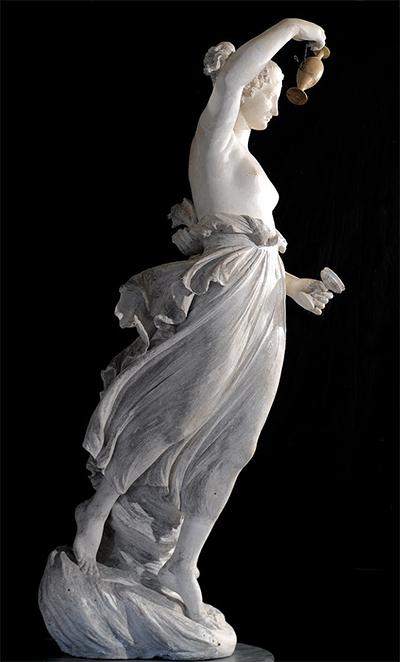Standing at 161cm tall, Antonio Canova created Hebe, a magnificent marble sculpture, created in Italy between 1800 and 1805.
Canova was an exceptional sculptor who was active in the late 18th and early 19th century and based most of his work around Ancient Greece and Rome. The story behind one of Canova's most famous sculptures is that Hebe was a daughter borne to Greek gods Zeus and Hera. Based on ancient Greek mythology, Hebe represented youth. Her role was to bring cups of nectar and ambrosia to provide everlasting youth and eternal life at feasts and events such as the Olympics, which is represented in this fine sculpture.
Canova was well known for his antique technique often used by the Greeks. His sculptures took on a lengthy production process beginning by sketching out his designs, followed by a clay model then working model plaster cast and then the final marble piece. In this particular piece, Canova portrayed Hebe as effortlessly floating amongst the clouds at Mount Olympus. Canova created the image of Hebe’s long floating gown hanging in loose folds to give the illusion of movement. Sculptor Giuseppe Bernardi (also known as Torretti) who Canova worked with in Pagnano when he was only 11 years old could have influenced some of Canova’s sculptures. It was with Bernadi that he acquired skills in classical art and drawing the nude form, which was popular at the time. Canova’s techniques were also influenced by Scottish painter Gavin Hamilton who encouraged Canova to pursue the antique style which is displayed in this particular sculpture.
Hebe was one of Canova’s most recognisable scultptures and was often admired for its uniqueness at the time and was used as inspiration for many other budding neoclassical sculptors at the time. What made this particular piece special was that Canova didn’t model his design on an existing model but composed it by himself. Canova created several different versions of Hebe. In the first two versions, such as in this piece, Hebe is falling down towards the clouds, however in the third versions, the clouds were swapped for a tree trunk and the drapery was altered accordingly. Also, in a later version of the sculpture, Canova added a necklace and a crown.




